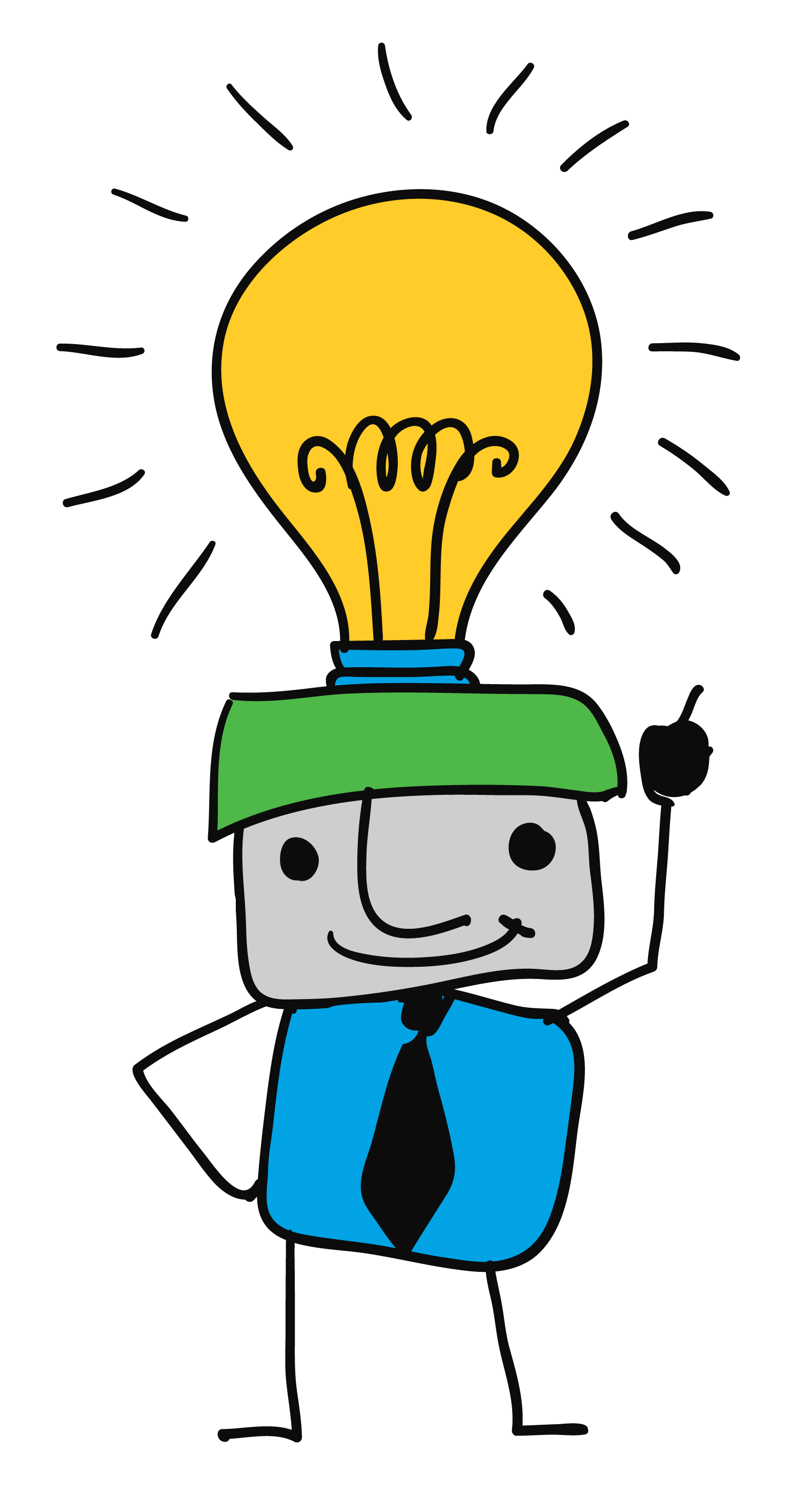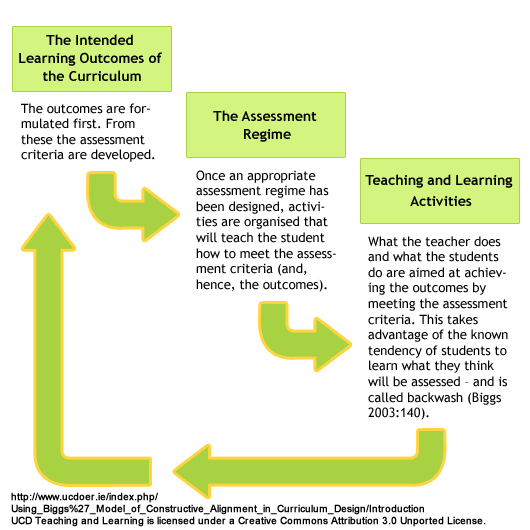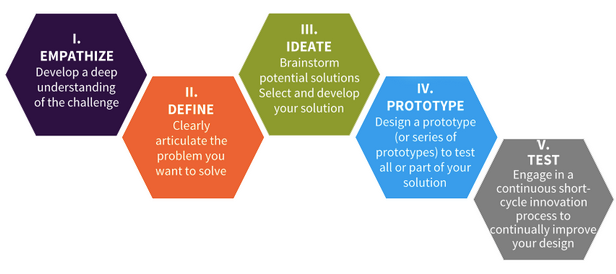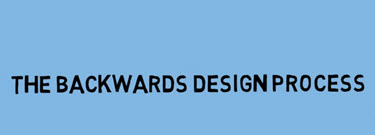Week 2: Overview
| Site: | SCoPE - BCcampus Learning + Teaching |
| Group: | Facilitating Learning Online - Design SEPT 2020 OER |
| Book: | Week 2: Overview |
| Printed by: | Guest user |
| Date: | Monday, 22 December 2025, 9:08 AM |
Description
A quick review of learning theories, instructional design approaches and related concepts/ideas to help ground each design plan.
Overview
 During Week 2 we'll explore various approaches to instructional and learning design, and related concepts/ideas to help you plan your Design Project.
During Week 2 we'll explore various approaches to instructional and learning design, and related concepts/ideas to help you plan your Design Project.
You'll have the opportunity to review examples of online course design and explanations of the challenges and intentions of the designers.
Principles of Practice
During Week 1, we focused on how people learn. We'll continue to encourage you to explore the learner's perspective in this overview but we'll start with a reminder of the importance of the instructor's role in developing relationships with learners.
Before the research and framework that supported the Community of Inquiry model, there was a well-researched set of seven principles of good practice in higher education that identified ways in which instructors could support student success (Chickering and Gamson, 1991).
1. Encourage contact between students and faculty.
2. Develop reciprocity and cooperation among students
3. Encourage active learning.
4. Give prompt feedback
5. Emphasize time on task.
6. Communicate high expectations
7. Respect diverse talents and ways of learning.
Similar principles are cited in other guidelines. The University of Mary Washington's Online Learning Intiative uses five principles to guide their online learning designs (cited in Inside Higher Education article, 2012):
- Develop a learning community
- Provide a high degree of interactivity - between instructors and students and among/between students;
- Provide active learning
- Encourage reflection
- Include opportunities for self-directed learning
And a recent multi-case study analysis of student perceptions of the important factors of online course design (Fayer, 2014) identified the most valued elements as those related to the instructor's knowledge and instructional skills online and on the design of the course:
Strong Course Organization
- provide highly organized course materials / documents prior to the start of a course
- allow students to access all content modules at start of course so they can explore and manage their time
- provide multiple opportunities to engage with complex content and master important concepts
- provide structured and timely feedback
- ensure relevance of content and activities is clear to students
For examples of popular quality guidelines, see the following page.
References
Chickering, Arthur W., Z.F. Gamson, eds. (1991) Applying the Seven Principles for Good Practice in HIgher Education, New Directions for Teaching and Learning, Number 47, Fall 1991 Retrieved from https://onlinelibrary.wiley.com/doi/pdf/10.1002/tl.37219914701
Crews, Tena B., et al (2015) Principles for Good Practice in Undergraduate Education: Effective Online Course Design to Assist Students' Success, Merlot Journal of Online Learning and Teaching, Vol.11, No.1, March 2015. Retrieved from http://jolt.merlot.org/vol11no1/Crews_0315.pdf
Dreon, Oliver. (2013) Applying the Seven Principles for Good Practice to the Online Classroom, Faculty Focus, February 25, 2013, Retrieved from http://www.facultyfocus.com/articles/online-education/applying-the-seven-principles-for-good-practice-to-the-online-classroom/
Fayer, Liz (2014) A Multi-Case Study of Student Perceptions of Online Course Design Elements and Success, International Journal for the Scholarship of Teaching and Learning, Vol 8, No. 1, Article 13, Retrieved from http://digitalcommons.georgiasouthern.edu/cgi/viewcontent.cgi?article=1001&context=ij-sotl
Kim, Joshua, (2012) 5 Foundational Principles for Course Design, Inside Higher Education, Retrieved from https://www.insidehighered.com/blogs/5-foundational-principles-course-design
University of Florida, Center for Instructional Technology and Training (2016) Chickering and Gamson 7 Rules for Undergraduate Education, Retrieved from http://citt.ufl.edu/tools/chickering-and-gamson-7-rules-for-undergraduate-education/
Active Learning Online
As instructors and designers, we've moved from traditional approaches to transmitting knowledge. Active learning is a teaching method or approach that strives to involve students in learning to achieve more than short-term retention of information. Students are asked to read, write, discuss or solve problems and engage in more complex levels of learning that involve analysis, synthesis and creativity.
Active learning strategies in online course design are important in keeping a student "connected" to the online learning environment and help them to succeed in achieving the outcomes of a course. We'll explore active online learning activities in greater detail in Week 3, as you begin to develop your prototype online learning activity.
When designing for active learning online, keep in mind the Community of Inquiry model and the changing roles of instructor and learners (i.e., instructor becomes more of an guide and facilitator of learning through cognitive and social interactions, and the students take on more responsibility for their own learning and contributing to the online learning community). A related area of research is Terry Anderson' Interaction Equivalency Theory that identifies three important types of interaction between
- students and content;
- teacher and students
- students
Further research by Robert Bernard and colleages (2004) indicated that increasing any of the three types of interactions increased student performance.
While the role of the instructor is still critical in scaffolding deeper learning online, designing a variety of activities, that involve the learner in self-directed and collaborative activities is an effective design strategy. Some key elements to keep in mind:
- offer different types of interactive activities
- build sequential activities in which each builds on the preceding one
- provide timely constructive feedback, from the instructor and from peers
- allow time for reflection and assessment of learning progress
While much of the current course design and development in higher education follows a constructivist model, the evolving "new" learning theories like connectivism, and related concepts of networked learning and "21st century learning", rely on creating safe learning environments and enabling or supporting learners to explore and create learning with peers.
Learning takes place between instructors, students and content in the online "classroom" and beyond as students increasingly seek out meaningful learning through personal learning networks and social media platforms.
References
Anderson, T. (2010). Interactions Affording Distance Science Education. In D. Kennepohl & L. Shaw (Eds.), Accessible Elements: Teaching Science Online and at a Distance (pp. 1-18). Edmonton: Athabasca University Press.(p10) Retrieved from http://www.aupress.ca/books/120162/ebook/01_Kennepohl_Shaw_2010-Accessible_Elements.pdf
Approaches to Design
Instructional / Learning Design?
Instructional design is a systematic approach to creating curriculum and courses, and can involve design approaches that focus on:
- the learner and the process of learning
- how to teach the content or competencies of a program or course.
While most of the well-known (and widely used) design approaches were not originally developed for online course design, they are still useful.
Starting from ADDIE
The most commonly used instructional design approach is the "ADDIE" model. An instructional design approach developed for the U.S. Army in the mid-1970's, this model is made up of five phases:
- Analysis
- Design
- Development
- Implementation
- Evaluation
Although it has been criticized as restrictive and linear, it can be interpreted and applied in a wide variety of educational contexts and has proven to be flexible in application. For a further discussion of the benefits and limitations of the model, see section 4.3 The ADDIE model from "Teaching in a Digital Age" by A.W. Bates.
Current adaptations of the ADDIE model often include some form of rapid prototyping of course or program elements. Rapid prototyping is a product or software development approach that has been integrated into educational design to make the process more efficient and adaptive. By testing a component of a course design before the entire design is complete, design flaws or misunderstandings can be caught early in the process, thus saving time and resources.
Agile Design
Another attempt to make course design approaches more flexible was the development of agile design models. Agile design generally involves smaller groups, often only two people, who access other experts as required during the design process (Bates, 2015). In recognition of the emergent nature of knowledge and the changing needs of diverse learners, the content is flexible and adapts to changing tools and educational technologies as they become available. An example of agile instructional design is SAM - Successive Approximation Model.
Choosing a Design Approach
For the purpose of this FLO Design course, we're suggesting you consider two guiding perspectives for your Design Project:
- a focus on learning outcomes, assessment strategies and the content and activities (i.e., Outcomes-based or Backwards Design approach);
- a constructivist approach that begins from outcomes but focuses on a more individualized learning approach, collaborative knowledge-building and iterative and sometimes peer-based feedback/assessments.
References
1. Outcomes-based Design
In the past, an instructor would be assigned to teach a course and focused first on selecting a textbook and identifying the major topics and concepts that needed to be covered. This often resulted in content-based, transmission model of delivery courses.

Most course outlines in higher education now include learning outcomes (although some still use the language of "objectives") and course design has become "outcomes-based".
An associated concept articulated by John Biggs, an Australian-born professor and writer, referred to the value of making the assessment and teaching strategies coherent with the stated outcomes; this concept is known as "constructive alignment."
An "aligned" curriculum is developed from intended learning outcomes, followed by logically connected learning/teaching activities and assessments (including formative and summative or evaluative instruments). The design process is not linear but an integrated flow that is always measured against the intended outcomes for learners.
This outcomes-based approach is used in many educational institutions and is often guided by the specific approach developed by Grant Wiggins and Jay McTighe. You may hear this referred to as Understanding by Design or Backwards Design. While design still begins from a focus on the learner, the UbD framework and the "backwards" approach help designers overcome the limitations of focusing on content or outcome statements alone.
To learn more about the process of backwards-design (outcomes-based) from the perspective of a designer, take a few minutes to watch the video from Cindy Underhill, an award winning educator and designer from the University of BC (click on the image to open the Youtube video.)
References:
The Backwards Design Process, Cindy Underhill, Potentially Coherent Youtube channel, CC-BY Attribution-Reuse allowed
Culatta, R. (2015) Transformative Learning (Jack Mezirow) Instructional Design.org. Retrieved from http://www.instructionaldesign.org/theories/transformative-learning.html
Smith, M.K. (2002) 'Malcolm Knowles, informal adult education, self-direction and andragogy', the encyclopedia of informal education, http://infed.org/mobi/malcolm-knowles-informal-adult-education-self-direction-and-andragogy/
University of Alaska Fairbanks, eLearning & Distance Education, iTeachU, Pedagogy Resources: Backward Design, CC BY-NC-SA 4.0, Retrieved Nov 2017 from https://iteachu.uaf.edu/backwardsdesign/
University of Athabasca, Community of Inquiry Model (website). Retrieved from https://coi.athabascau.ca/coi-model/
University College Dublin Teaching and Learning, Using Biggs' Model of Constructive Alignment in Curriculum Design, Becoming a Better University Teacher, Creative Commons 3.0 Unported License. Retrieved from http://www.ucdoer.ie/index.php/Using_Biggs'_Model_of_Constructive_Alignment_in_Curriculum_Design/Introduction
Additional references:
Fallahi, Carolyn (2011) Using Fink's Taxonomy in Course Design, Association for Psychological Science
Fink, L. Dee (2005). A Self-Directed Guide to Designing Courses for
Significant Learning (pdf), Dee Fink & Associates. Retrieved from https://www.deefinkandassociates.com/GuidetoCourseDesignAug05.pdf
2. Constructivist Learning Design
A Design Thinking Approach
Empathy: take time to reflect on your learners and their needs / expectations of learning. You may find it useful to view a short video about empathy by Brene Brown (see below). Some versions of Design Thinking develop detailed descriptions of learners called "personas" to guide their designs.
Define: frame the problem and purpose clearly - why are you doing this?
Ideate: take time to consider more than one idea about how to involve your students in learning your subject or topic - brainstorm as many ideas as possible. Finding innovative ideas is a goal.
Prototype: after selecting the main ideas, this step involves "fleshing out" the ideas and providing detailed models or illustrations of how they would work in practice. The purpose is to share the ideas to gather feedback and test the assumptions and beliefs that underly each idea. (You may notice that we used this approach in FLO Design - by asking you to identify and/or develop a prototype learning activity.)
Test: the final step is to test your ideas. Be prepared to collect responses and ideas for what worked and what didn't - return to the design cycle to integrate what you've learned.

You can explore some examples of how each phase occurred in Using Design Thinking in Higher Education or visit an application of design thinking Rethinking Your Course, in a recent project at University of Guadalajara (UdG), led by Justice Institute's Tannis Morgan.
References
Brown, Brene (2013)
Morris, Holly and Greg Warman (2015) Using Design Thinking in Higher Education, EDUCAUSE Review, Jan. 12, 2015. Retrieved from http://er.educause.edu/articles/2015/1/using-design-thinking-in-higher-education
IDEO's Design Thinking Toolkit for Educators, Retrieved from https://www.ideo.com/us/post/design-thinking-for-educators
Thompson, Gary (2010) Personas, FLUID Project wiki https://wiki.fluidproject.org/display/fluid/Fluid+Project+Wiki
Stanford's d.school Virtual Crash Course in Design Thinking. Retrieved from http://dschool.stanford.edu/dgift/
Learn more
- open educational resources (OER) “any type of educational materials that are in the public domain or introduced with an open license.” (defined by UNESCO)
- open pedagogies - teaching practices that involve the use of OERs to support learning, or that involve open sharing of teaching practices with the goal of improving education and learning. Open teaching practices may involve the teacher and / or the students in engaging with online experts or networks beyond the online classroom. Teachers may be inviting students to be part of the process of teaching or the co-development of knowledge.
Open Education
The concept of "open education" is an evolving approach that currently includes a wide continuum from using open educational resources (OERs) to "build" your course (that you continue to design with an overriding traditional approach) to designing courses that integrate open teaching practices, open co-creation of learning activities and artifacts, and resharing into the open community.
An early approach
A straightforward "open" approach to course design is the "5R Open Course Design Framework." David Wiley has been a long-time leader in the field of "open" and his "5Rs" approach (i.e., Retain, Reuse, Revise, Remix, Redistribute) emphasizes a change in thinking in design and teaching practices. While his approach still follows traditional design practices (such as Mager's Audience-Behavior-Condition-Degree method for writing learning objectives and constructive alignment of course elements) his "open" approach emphasizes an "authentic" learning perspective in designing "renewable assignments", involving students in reviewing, re-organizing and improving course materials, and encouraging students to "share back" by open-licensing their creations.
Open pedagogies, but...
To protect students privacy, and to maintain some confidentiality that educational institutions may require, educators can choose to use open pedagogies as part of their design and development of a course within a "closed" learning management system BUT they will add some components that open their teaching practice to the Internet. One example is visible on the website The Non-Disposable Assignment, by Michael Paskevicius, while he worked at Vancouver Island University (he's now at University of Victoria).
If you have time, browse some of the examples of open online education from University of BC
"Wide Open" Course Designs
- ds106 Digital Storytelling, an open, online course from University of Mary Washington. First run "open" in 2012.
- #PHONAR, a free and open undergraduate photography course. runs periodically, open structure and resources to view
- Connected Courses: Active Co-Learning in Higher Ed, a self-paced yet collaborative model of open design intended to "provide educational offerings that make high quality, meaningful, and socially connected learning available to everyone. Offered Sept-Dec 2014 - structures and resources still available for use.
Other places to watch
Stories of teaching in the open and guides to finding various OERs can be explored on the Open UBC site. Check out some of the partners to Open Education in Canada - a collection of note is available from Yukon University - for students but useful links for educators too.References
BCcampus OpenEd (2016). The Canada OER Group: Saving students money from coast to coast, news posting Jun 29, 2016.
Open UBC, What is teaching in the open? Teach - see also Open resources, Open assignments, Open practice, Resources (accordions following the main article) - Creative Commons Attribution-ShareAlike 4.0 International License
Creative Commons, Education / OER website, Creative Commons Attribution 4.0 International License
OER Commons, Open Educational Resources, by Subject, by Grade Levels, by Materials Types, Creative Commons Attribution-NonCommercial-ShareAlike 3.0 License
David Wiley, (2015) 5R Open Course Design Framework, Fall 2015 Version, Slideshare, Creative Commons Attribution 4.0 International License
CUSO Professional Education, (2014) The ABCD Method of Writing Measurable Objectives (pdf)
Hibbitts, Paul (2015) Flipped-LMS Approach Using an Open and Collaborative Web Platform, blog post December 18, 2015, Creative Commons Attribution ShareAlike License (on Github)
Hibbitts, Paul (2014) Developing a course in the open: a case study, on SLIDES, presented at ETUG Spring Workshop 2014
